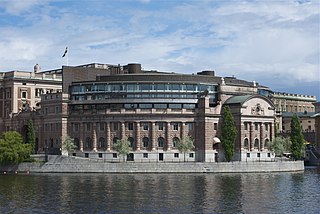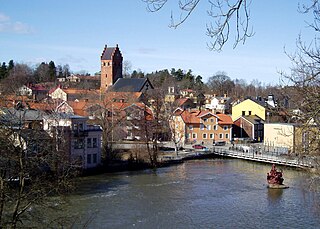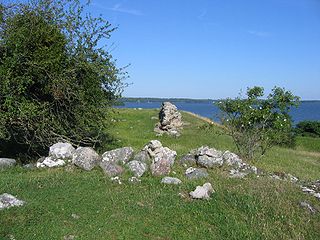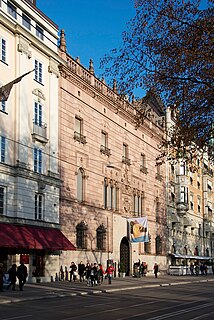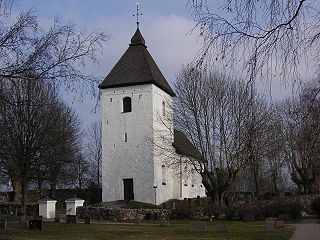This article includes a list of references, related reading or external links, but its sources remain unclear because it lacks inline citations .(June 2011) (Learn how and when to remove this template message) |

Vira bruk is a village and an historic iron works in Österåker in Sweden.
Vira bruk was founded around 1630 by Clas Fleming.[ citation needed ] On the basis on a monopoly granted by a royal privilege it manufactured most of the rapiers and swords for the Swedish army into the mid 19th Century.

Clas Larsson Fleming was an Admiral and administrator involved in the development of a formal management structure for the Royal Swedish Navy under King Gustav II Adolf and Queen Christina. He is remembered as one of the ablest administrators in the history of the Swedish navy, and is in many ways a typical example of the type of aristocrat who served the Swedish Crown during the period of Sweden's imperial expansion.
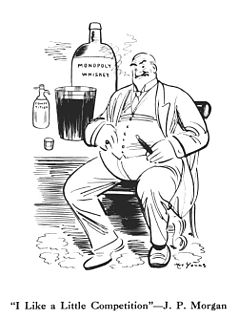
A monopoly exists when a specific person or enterprise is the only supplier of a particular commodity. This contrasts with a monopsony which relates to a single entity's control of a market to purchase a good or service, and with oligopoly which consists of a few sellers dominating a market. Monopolies are thus characterized by a lack of economic competition to produce the good or service, a lack of viable substitute goods, and the possibility of a high monopoly price well above the seller's marginal cost that leads to a high monopoly profit. The verb monopolise or monopolize refers to the process by which a company gains the ability to raise prices or exclude competitors. In economics, a monopoly is a single seller. In law, a monopoly is a business entity that has significant market power, that is, the power to charge overly high prices. Although monopolies may be big businesses, size is not a characteristic of a monopoly. A small business may still have the power to raise prices in a small industry.
Vira bruk was owned by the Fleming family until 1757, when it was sold to Reinhold Angerstein, who at that time was an official of the Swedish Board of Mines.[ citation needed ] Angerstein planned for extension of the manufacturing, but died in 1760 before they could be realized. The works then were taken over by his brother-in-law, the archbishop Samuel Troilius.

The Louhisaari noble family, otherwise known as Fleming or Flemming, is a Finnish family of medieval frälse.

Reinhold Rücker Angerstein, born October 25, 1718 at Vikmanshyttan, dead January 5, 1760 in Stockholm, was a Swedish metallurgist, civil servant and entrepreneur.
The Swedish Board of Mines was a government agency in Sweden that worked between 1637–1857 with the task of guiding and controlling the mining industry and metal processing in Sweden. Between 1637–1649 its name was Generalbergsamtet, also called Bergsämbetet.
The royal privilege lasted until 1775, but the forge continued to supply weapons to the Swedish armed forces into the 19th Century and later manufactured civilian products, such as axes and scythes, into the mid-20th Century. Vira bruk is now a museum.

A forge is a type of hearth used for heating metals, or the workplace (smithy) where such a hearth is located. The forge is used by the smith to heat a piece of metal to a temperature where it becomes easier to shape by forging, or to the point where work hardening no longer occurs. The metal is transported to and from the forge using tongs, which are also used to hold the workpiece on the smithy's anvil while the smith works it with a hammer. Sometimes, such as when hardening steel or cooling the work so that it may be handled with bare hands, the workpiece is transported to the slack tub, which rapidly cools the workpiece in a large body of water. However, depending on the metal type, it may require an oil quench or a salt brine instead; many metals require more than plain water hardening. The slack tub also provides water to control the fire in the forge.

A scythe is an agricultural hand tool for mowing grass or reaping crops. It has largely been replaced by horse-drawn and then tractor machinery, but is still used in some areas of Europe and Asia.

A museum is an institution that cares for (conserves) a collection of artifacts and other objects of artistic, cultural, historical, or scientific importance. Many public museums make these items available for public viewing through exhibits that may be permanent or temporary. The largest museums are located in major cities throughout the world, while thousands of local museums exist in smaller cities, towns and rural areas. Museums have varying aims, ranging from serving researchers and specialists to serving the general public. The goal of serving researchers is increasingly shifting to serving the general public.

